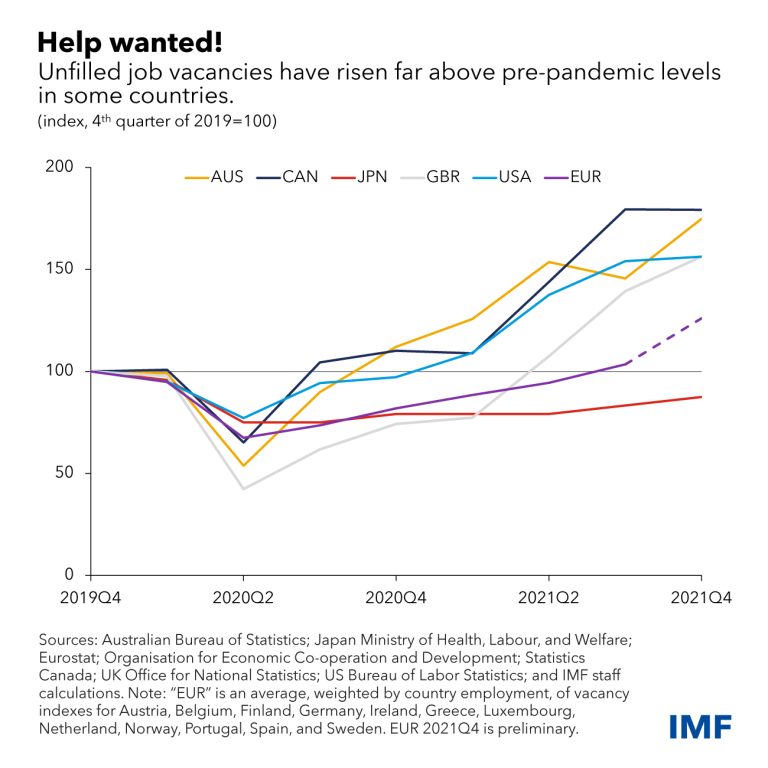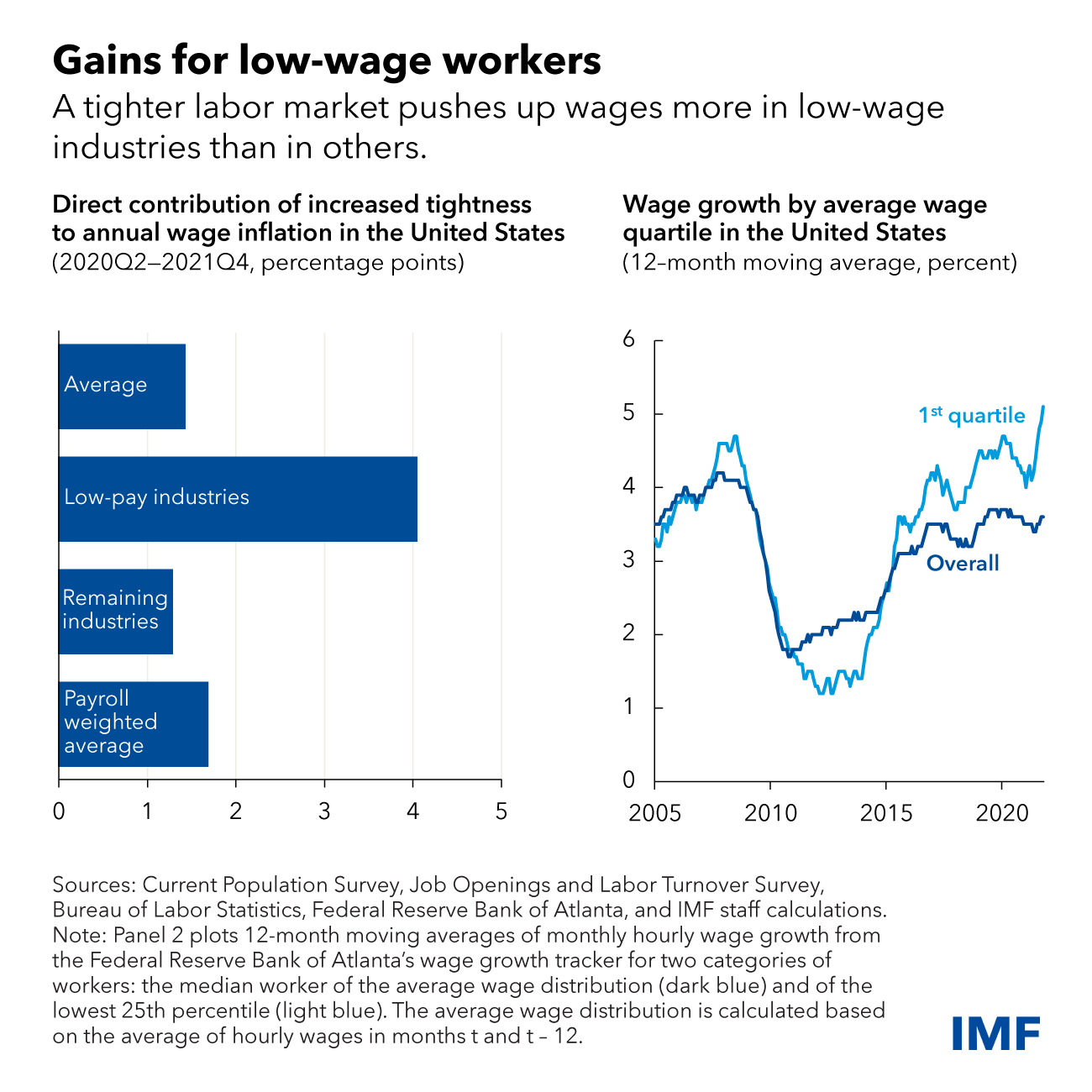摘要: Labor shortages have pushed up wage growth, benefitting low-wage workers but adding to inflation risks.

▲圖片來源:leackstat.com
Labor shortages have pushed up wage growth, benefitting low-wage workers but adding to inflation risks. Bringing more workers back into the labor force would ease these pressures while making the recovery more inclusive.
By late 2021, there were 50 percent to 80 percent more unfilled jobs in Australia, Canada, the United Kingdom and the United States than there were prior to the pandemic. Open vacancies were at or above their 2019 levels in other advanced economies too, and have risen steadily across all sectors, including those that are more contact-intensive, such as hospitality and transportation. Increases in vacancies have been largest for low-skilled jobs.

The sharp rise in unfilled vacancies partly reflects how strong the economic recovery in advanced economies had been until the start of the Ukraine crisis, with firms recruiting en masse to cope with booming demand.
But, as a new IMF Study shows, this is just one part of the story.
Why aren’t vacancies being filled?
Vacancies have been hard to fill for several reasons, some of which were outlined in a previous blog. One is health concerns related to the pandemic. Because of these, some older and lower-skilled workers previously employed in contact-intensive industries remain outside of the labor force, shrinking the pool of available job seekers.
In the median advanced country, low-skilled workers account for over two-thirds of the gap between aggregate employment and its pre-pandemic trend. Older workers, as a group, contribute about one-third of this employment gap. In some countries, such as Canada and the United Kingdom, the decline in immigration also seems to have amplified labor shortages among low-skill jobs.
Another reason why vacant jobs have been hard to fill is that COVID-19 may well have changed workers’ job preferences. In the United States, resignations have risen beyond what their historical relationship with vacancies would imply, suggesting that workers are not just seizing opportunities in a hot labor market but also searching for better working conditions. In the United Kingdom, resignations have risen the most for low-wage jobs that are contact-intensive, physically strenuous or offer little flexibility, such as in transport and storage, wholesale and retail trade, or hotels and restaurants.
Impact on wage growth and inflation
Labor market tightness (as measured by the ratio of vacancies to the number of unemployed workers) has pushed up wage growth across the board. But the impact on wage growth in low-wage sectors has been over twice as large, at least in the United States and United Kingdom. This is because wages are over twice as responsive to tightness in low-pay industries, which have also seen larger increases in tightness than other industries. We estimate that the annual growth rate of nominal wages in low-pay industries increased by 4 to 6 percentage points between mid-2020 and late 2021 because of rising labor market tightness, helping reduce wage inequality in some countries. However, on average, these pay gains have not yet resulted in additional spending power due to higher price inflation.
The overall impact of increased tightness on wage inflation has been more moderate so far, at least 1.5 percentage points in both countries. This is partly because of the small overall share of low-pay industries (and jobs) in total labor costs.

Insofar as labor market tightness persists, it is likely to keep overall nominal wage growth strong going forward. The impact on inflation is expected to be manageable unless workers start to demand higher compensation in response to recent price hikes and/or inflation expectations rise. Central banks should continue to signal their strong commitment to avoid any such price-wage spirals.
Policies can help bring workers back
Curbing COVID-19 outbreaks would enable older and low-wage workers to reenter the labor force, thereby easing labor market pressures and inflation risks. Keeping schools and daycares open will also be important for women with young children to fully get back to work.
Well-designed active labor market policies could also speed up job matching, including through short-term training programs that help workers build the skills required for new fast-growing digital-intensive occupations, such as technology and e-commerce, or more traditional jobs that have experienced acute shortages, such as truck drivers or care workers. To accommodate shifting worker’s preferences, labor laws and regulations also need to facilitate telework. And where the decline in immigration amplifies labor shortages, its resumption could further “grease the wheels” of the labor market.
Tighter labor markets in several advanced economies have been good news so far. They have increased pay, especially for low-wage workers, with a manageable impact on price inflation (the surge has predominantly been driven by other factors). But some workers who left during the pandemic have yet to return, while others have lingering concerns about their current jobs and new expectations, restricting labor supply. By doing more to help these workers, governments can make the labor market recovery more inclusive while curbing inflation risks.
轉貼自Source: leackstat.com
若喜歡本文,請關注我們的臉書 Please Like our Facebook Page: Big Data In Finance


留下你的回應
以訪客張貼回應